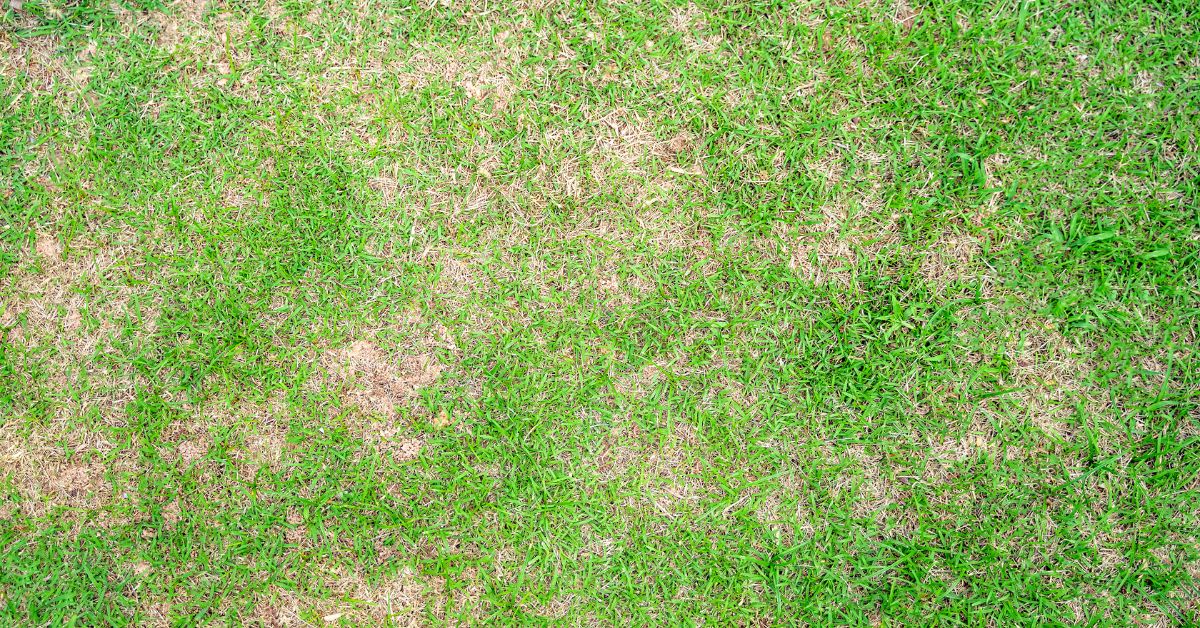How to Deal with Common Lawn Care Problems

There are many problems that can affect your lawn – some are easy and only mildly inconvenient; others are hard to deal with and can even be hazardous. Read on to learn about some of the biggest lawn care problems and how to deal with them.
Common Lawn Care Problems
Some of the most common lawn care problems include:
- Weeds
- Poor soil
- Patches, spots, and stripes
- Fungus
- Shade
Unfortunately, there is no one-size-fits-all solution to overcome these and each will require a different remedy.
Lawn Weeds
Weeds are probably one of the first things that comes to mind when thinking about lawn care problems. Dandelions are one among many different types of weeds that can infect your lawn and are truly an inevitable part of a lawn with good water access. You may face dandelions, buttercups, clover, chickweed, yarrow, and many others.
The bad part about weeds is that, if left untreated, they will spread throughout your lawn and compete with your grass for soil space, water, food, and light. Over time, your grass will degrade, along with its overall aesthetic appeal.
The best way to kill weeds without damaging your lawn is to use a selective weedkiller or granular lawn treatment that specifies that it kills weeds. The eco-friendlier option is to remove all of the weeds manually, including the root and stem. To be as thorough as possible, some people will prefer to do both methods.
Crabgrass
Crabgrass is also technically a weed. It is an aggressive, fast-growing grass that thrives in lawns that are cut too short, are unfertilized, and have compact, clay soil. Odds are that you’ve seen this thick grass growing in patches above surrounding lawn grass or sprouting from cracks in sidewalks.
Crabgrass will make your lawn look unpleasant, full of weeds, and unlevel with big, bumpy clumps.
It is an extremely hard weed to prevent, but it can be done with pre-emergent chemicals and herbicides (talk to an expert to know exactly which type to use for your lawn), correct mowing height, and proper watering that is deep and infrequent to encourage your lawn roots to grow deeply.
Crabgrass can be treated if it has already begun to grow, but it is much harder to do so than preventing it in the first place. Treat crabgrass by removing it by hand, using vinegar spray and boiling water, or applying store-bought products.
Compacted Soil and Poor Aeration
Compacted soil is a big problem which leads to poor aeration and water retention. The soil underneath your lawn can become hard and compact due to high foot traffic or improper prepping.
Compacted soil will only have 10% open space to hold air and water, leaving the roots of your grass to become fragile, weak, and sparse. You will notice that your grass will grow slower, become thin, susceptible to weeds, and will incur flooding and pooling of water.
Fortunately, this problem is easy to fix with lawn aeration. A professional will use piston-driven aerators which open small holes in the lawn and loosen the soil.
Brown Patches, Spots, and Stripes
There are many reasons why patches of your lawn may die, but the main clue to discovering why this happens is often in the shape of the patch itself.
Animal urine, such as dogs or foxes, can be high in nitrogen which kills grass. Watering these areas that receive this type of treatment from your pets can limit the damage, effectively washing off and diluting the urine.
If the lawn is established but thin and sparse, you will want to check if you are using the correct grass seed for the pH levels of the soil. Test and adjust as needed. If there are bald spots, you can fill them in with new topsoil and reseed.
Brown spots may be a sign of disease caused by fungal organisms. The giveaway will be rot at the base of grass blades. Deal with this problem by watering early in the morning to ensure it is dry by nightfall. Aerating the lawn will also improve soil circulation and health.
Stripes are likely a sign of fertilizing and mowing in the same patterns. Overcome this by mowing and fertilizing your lawn in different directions, or by overlapping the alignment of the wheels across the stripes.
Poor Growth in Shade
Grass, just like all plants, needs sunlight to grow well. But, it can be tricky when your yard is covered in shade. The solution here is to use the right type of grass. There are grass types that are excellent for shady and sunny conditions, so it is always helpful to recruit a lawn care company for advice on your situation.
Contact the Experts
There is a lot to keep in mind to ensure the best health and appearance of your lawn, but Foundations Property Management is here to help. We are the experts in lawn care and landscape maintenance; to get help with your own lawn, contact us today!
